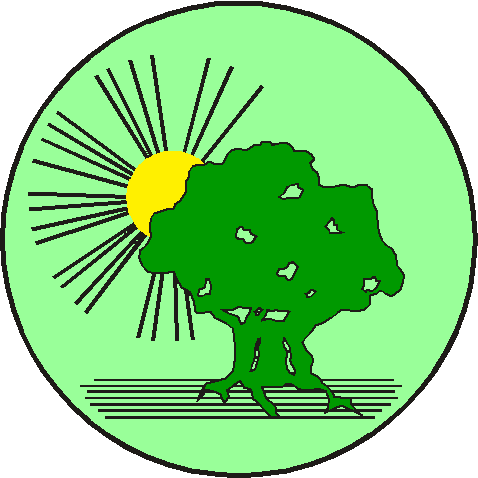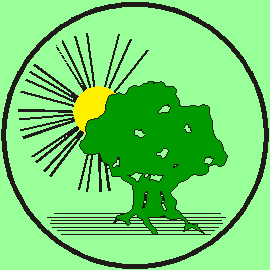L. Ways We Are Divided
In this Chapter:
- Study Questions
- Overview Article L
- Reading Set L1: Race, Religion, Ethnicity
- Reading Set L2: Age, Ability
- Reading Set L3: Gender, Sexual Identity
- Reading Set L4: Class
- Reading Set L5: Multiculturalism, Respect, Inclusion
- Additional Resources
Natural differences in human characteristics can divide us or illuminate our distinctive and precious traits.
Study Questions
- Which forms of prejudice and discrimination are more prevalent, powerful, and difficult to challenge and overcome: those based on class, race, sex, ethnicity, age, sexual preference, disability, or some other?
- Do acts of prejudice and discrimination towards those who are different (1) simply demonstrate the natural ways that humans tend to act, (2) reveal the rigidity and intolerance of particular individuals who have not been brought up well, or (3) reflect deliberate efforts by the elite to pit oppressed groups against each other — especially groups that might challenge the power of the elite?
- Which is the best way to have people get along in a society: tolerant separation, assimilation, or respectful multiculturalism?
Overview Articles L
13 pages total
“Custom Against Women,” an excerpt from The Culture Struggle by Michael Parenti, 2006, 5 p.
http://www.zcommunications.org/custom-against-women-by-site-administrator
Perceiving a society “purely on its own terms” usually means seeing it through the eyes of dominant groups that exercise a preponderant influence in shaping its beliefs and practices.
“Education, Discourse, and the Construction of Identity,” an essay by Nicholas C. Burbules, University of Illinois at Urbana-Champaign, 1994, 8 p.
http://www.ed.uiuc.edu/EPS/PES-yearbook/94_docs/BURBULES.HTM
A discussion of the role of and the strengths and weakness of identity politics. Role of identity (starting with gender) in social movements
Reading Set L1: Race, Religion, Ethnicity
59 pages total
“Malcolm X and Black Rage,” an excerpt (pp. 149-51) from Race Matters by Cornel West, 1994, 3 p.
http://aad.english.ucsb.edu/docs/west.blk.rage.html No longer available here.
How to channel black rage without imposing artificial boundaries.
“Escaping From Blackness: Racial Identity and Public Policy,” syndicated opinion column by Manning Marable, September 2000, 5 p.
http://www.jacksonprogressive.com/issues/civilliberties/marable/blackness.html
The greatest struggle of any oppressed group is the struggle to reclaim collective memory and identity.
“Sexism and Misogyny: Who Takes the Rap? Misogyny, gangsta rap, and The Piano,” by bell hooks, 1994, 13 p.
http://stevenstanley.tripod.com/docs/bellhooks/misogyny.html
or
http://cleveland.indymedia.org/news/2007/04/25069.php
or
Gangsta rap in the context of white patriarchy.
“Exploring the Depths of Racist Socialization,” by Tim Wise, ZNet Daily Commentaries, April 24, 1999, 15 p.
http://www.zcommunications.org/exploring-the-depths-of-racist-socialization-by-tim-wise
or
http://www.areteadventures.com/articles/exploring_the_depths_of_racist_socialization.pdf
A powerful story that reveals the depth of racist conditioning.
“Anti-Semitism and Anti-Colonialism,” by Justin Podur, ZNet Daily Commentaries, January 4, 2003, 4 p.
http://www.zcommunications.org/anti-semitism-and-anti-colonialism-by-justin-podur
or
http://groups.yahoo.com/group/peacecenter/message/7480 Scroll down half of page.
A short history of anti-semitism, and an overview of how minorities are set up against each other.
“Christian Privileges in American Society: Hidden Ways Christians are Privileged,” by Austin Cline, About.com, 4 p.
http://atheism.about.com/od/christianismnationalism/p/XianPrivileges.htm
Our society continuously tells Christians that they are special and deserve privileges.
“Defining Religious Tolerance In The New World Order,” Contender Ministries, 2002, 4 p.
http://contenderministries.org/commentary/tolerance.php
Exhortations to “religious tolerance” would keep the faithful from spreading the word. It is imperative that evangelical Christians proudly proclaim the gospel to everyone we can.
“Atheists, Muslims See Most Bias as Presidential Candidates”, by Jeffrey M. Jones, Gallup, June 21, 2012, 1 p.
http://www.gallup.com/poll/155285/Atheists-Muslims-Bias-Presidential-Candidates.aspx
An indicator of the current prejudices of the American public.
Reading Set L2: Age, Ability
40 pages total
“Age Discrimination Endangers Human Rights for Young and Old Alike,” by Jan Hunt, The Natural Child Project, 5 p.
http://www.naturalchild.org/jan_hunt/age_discrimination.html
An overview of the similarities between discrimination against old and young.
“Towards a society without age discrimination,” manifesto of KinderRÄchTsZÄnker (KRATZA), 2 p.
Children should have the full rights of citizenship.
“Age Diversity,” part of a manual from Diversiton company, 5 p.
http://www.diversiton.com/Ageism/AgeDiversity.asp
A general overview of age diversity. Part of a manual on diversity for employers
“The Social Movement Left Out: On disability,” by Marta Russell, ZNET Daily Commentaries, August 31, 2002, 7 p.
http://www.zcommunications.org/the-social-movement-left-out-by-marta-russell
or
http://www.soaw.org/article.php?id=828
or
http://www.uua.org/documents/russellmarta/socialmovementleftout.pdf
Nondisabled activists and scholars have fervently studied and challenged the rational explanation for oppression based on identity — in particular, gender, race, and ethnicity — but excluded disability.
“Citizenship and Disability,” by Michael Bérubé, Dissent, Spring 2003, 15 p.
http://www.dissentmagazine.org/article/?article=506 Paid subscription now required.
or
http://www.alternet.org/story/15809/citizenship_and_disability
We have the obligation to enhance the abilities of our children and our fellow citizens with disabilities to participate in the life of the United States as political and moral equals with their nondisabled peers — both for their own good, and for the good of democracy.
“Barriers for Disability at Work,” by Catherine Komp, The NewStandard, March 13, 2006, 6 p.
http://www.alternet.org/story/33341/barriers_for_disability_at_work
The biggest barriers are not costs, but attitudes.
Reading Set L3: Gender, Sexual Identity
26 pages total
“The High Cost of Manliness,” by Robert Jensen, AlterNet, September 8, 2006, 5 p.
http://www.alternet.org/story/41356/the_high_cost_of_manliness
Society’s toxic view of masculinity isn’t just harmful to men. Everyone pays the price.
“Mars and Venus; Unequal Planets,” by Toni Shindler Zimmerman, Shelley A. Haddock, and Christine R. McGeorge, Journal of Marital and Family Therapy, January 2001, 3 p.
http://onlinelibrary.wiley.com/doi/10.1111/j.1752-0606.2001.tb01139.x/abstract Paid subscription now required.
What separates the sexes — biological and behavioral differences or power imbalance?
“Opinion Essay: Scapegoating Sexual Minorities,” blog entry by Gregory Herek, Beyond Homophobia, 2006, 3 p.
http://www.beyondhomophobia.com/blog/2006/10/15/scapegoating-sexual-minorities/
Society’s out-groups make convenient scapegoats, and mustering public outrage against them is often disconcertingly easy.
“Hetero-normativity and multiple discriminations suffered by women,” by Susana Fried, ILGA Panel at the 61rst UNCHR, October 5, 2005, 4 p.
http://ilga.org/ilga/en/article/558
Lesbians face not only discrimination but also violence, abuse, and barriers to justice.
“Gay … Pride?” by Bradford Lang Rothrock, Z Magazine, September 1996, 7 p.
http://www.zcommunications.org/gay-pride-by-bradford-lang-rothrock
I long not for a parade, but a massive demonstration linking-issues of social justice for all lesbians and gay men.
“Against Politics, Not People,” Questioning Transgender Politics, 1 p.
http://www.questioningtransgender.org No longer available here.
Very brief critique by feminists of transgender politics.
“Identity=Politics: A Personal Story,” by Jennie Ruby, off our backs, April 2000, Volume 30, Number 4, 3 p.
http://www.offourbacks.org/Articles.htm#Identity
Very short personal story about sexual identity. Very short personal story that would go well with the one above.
Reading Set L4: Class
54 pages total
“Class War Politics,” opinion column by Paul Krugman, New York Times, June 19, 2006, 3 p.
http://www.informationclearinghouse.info/article13680.htm Read the column or listen to the 15 minute speech.
or
http://theobfuscationreport.blogspot.com/2006/06/class-war-politics.html
The political center won’t return until we have a new New Deal, and rebuild our middle class. Century of class division in America
“Class Matters: How social change movements can build power by recognizing what keeps us apart,” an interview of Betsy Leondar-Wright by Timothy Harris, RealChangeNews.org, 7 p.
http://www.realchangenews.org/2005/2005_06_15/class_matters.html No longer available here.
The importance of bridging class divides in making change.
“It’s not ‘them’ — it’s us!” by Betsy Leondar-Wright, Class Matters, 2005, 14 p.
http://www.classmatters.org/2006_07/its-not-them.php
Middle class people are generally clueless about what they do that makes it hard for working class people to be with them.
“A Campaign Without Class,” by Howard Zinn, The Progressive, October 2000, 7 p.
http://www.thirdworldtraveler.com/Zinn/CampaignWithoutClass.html
or
http://www.thefreelibrary.com/A+Campaign+Without+Class-a066762588
We have been taught we mustn’t talk of class divisions in this country. This has been true since the beginning of the US. A piece about the lack of class warfare in the 2000 U.S. residential election—in historical context.
“College and Social Class: the Broken Promise of America,” by John Raines with Charles Brian McAdams, Cross Currents, Spring 2006, 20 p.
http://www.crosscurrents.org/Rainesspring2006.htm
What if success in school almost perfectly mirrors previously established patterns of relative class privilege?
“Whither Diversity?” by Gary Olson, Z Magazine, January 10, 2007, 3 p.
http://www.zcommunications.org/whither-diversity-by-gary-olson
A focus on diversity can obscure underlying issues of class.
Reading Set L5: Multiculturalism, Respect, Inclusion
36 pages total
“In Defense of a Politics of Identity,” essay by Barbara Houston, University of New Hampshire, 1994, 8 p.
http://www.ed.uiuc.edu/EPS/PES-yearbook/94_docs/HOUSTON.HTM
Coming to terms with all the strands of our identity.
“The Complexities of Coalition,” by Iris Young, Dissent, Winter 1997, 14 p.
http://www.dissentmagazine.org/article/?article=1559 Paid subscription now required.
Unity and understanding for a new people’s movement will not come from pretending that group differences do not matter, but rather from understanding precisely how they do matter, and so forging an inclusive picture of our social relations.
“On Complexity and Coalitions: A Reply to Iris Young,” by Todd Gitlin, Dissent, Spring 1997, 3 p.
http://www.dissentmagazine.org/article/?article=1877 Paid subscription now required.
Compiling a list of minority groups does not make a majority that can power real change.
“From Inequality to Difference: A Severe Case of Displacement?” by Anne Phillips, New Left Review (introduction), July-August 1997, 1 p.
http://newleftreview.org/I/224/anne-phillips-from-inequality-to-difference-a-severe-case-of-displacement Paid subscription now required.
On the distinction between inequality and difference.
“Multiculturalism Meets Feminism,” by Rebecca Hall, The Knoll, University of British Columbia, Issue Number 1, January 2006, 7 p.
http://theknoll.sdsubc.ca/the-knoll-magazine/1-january-2006/multiculturalism-meets-feminism No longer available here.
The tension between cultural relativity and the universality of rights.
“Multiculturalism Breeds Terrorism,” by Glenn Woiceshyn, Capitalism Magazine, June 24, 2006, 3 p.
http://www.capmag.com/article.asp?ID=4714
Scathing critique of multiculturalism.
Additional Resources
Articles
Woman’s Consciousness, Man’s World (excerpt) by Sheila Rowbotham, 1973, 13 p.
http://www.zcommunications.org/womans-consciousness-mans-world-by-sheila-rowbotham
A groundbreaking contribution to a new left politics inclusive of gender, class, and race.
“Economic Justice: The American Class System,” excerpted from Declarations of Independence by Howard Zinn, 1990, 14 p.
http://www.thirdworldtraveler.com/Zinn/EconomicJustice_DI.html
Throughout the history of the US, there has been a consistent record of laissez-faire for the poor, but enormous government intervention for the rich.
“Multiculturalism, Universalism and the Claims of Democracy,” by Anne Phillips, Democracy, Governance and Human Rights Programme, United Nations Research Institute for Social Development, Paper Number 7, December 2001, 44 p.
http://www.unrisd.org/UNRISD/website/document.nsf/ab82a6805797760f80256b4f005da1ab/62a0530438570ab3c1256bf30051cc19/$FILE/phillips.pdf Read the introduction. (6 p.)
Dense discussion of the tension between cultural relativity and the universality of rights.
 START
START 
